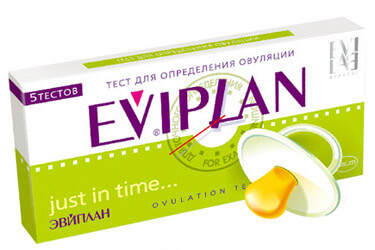When puberty is reached in the female body, regular monthly cycles begin. These reproductive cycles are controlled by the hypothalamus. The gonadopropin releasing hormone (GnRH), produced by the hypothalamus acts on the cells of the anterior pituitary gland, which in turn produce gonadotropins. It is these hormones, which include follicle-stimulating hormone (FSH) and luteinizing hormone (LH), that stimulate and control cyclic changes in the ovaries.
With the onset of each ovarian cycle, from 5 to 15 primordial follicles begin to grow under the influence of follicle-stimulating hormone. Normally, only one of these follicles reaches full maturity and ejects only one oocyte (female reproductive cell), other follicles degenerate. In the next cycle, another group of follicles begins to grow and again only one reaches maturity. In short, most follicles degenerate without reaching full maturity.
Ovulation
Before ovulation follicle de De Graaf rapidly increases in size under the influence of FSH and LH and reaches 15 mm in diameter. Simultaneously with the completion of the development of follicle de De Graaf, the primary oocyte completes the first meiotic division. And on the surface of the ovary, a local protrusion forms, at the top of which a speck appears - stigma. A high concentration of LH increases the activity of the collagenase enzyme, which leads to the dissolution of collagen fibers around the follicle. In response to the release of LH, the level of prostaglandin also increases, which entails local contractions of smooth myocytes of the ovarian wall. These contractions push the oocyte, which is ejected from the ovary under the pressure of follicular fluid. Some cells of the egg-bearing tubercle then reorient around the transparent zone and form a radiant crown . At the moment of ejection from the ovary of an oocyte surrounded by cells of an egg-bearing tubercle (ovulation), the first meiotic division is completed and the secondary oocyte begins the second division of maturation.
In some women, ovulation is accompanied by minor pain, known as median pain,since this process normally occurs around the middle of the menstrual cycle. Ovulation can also be accompanied by an increase in basal (rectal) temperature, you can follow this and in this way determine the moment when the egg is released. In some women, ovulation does not occur due to a low concentration of gonadotropins. In such cases, ovulation can be induced by the administration of gonadotropin release stimulants. Such drugs are quite effective, often cause multiple ovulation, therefore, the risk of multiple pregnancy in such women is 10 times higher in comparison with this indicator in the general population.
Oocyte movement
Before ovulation, the fimbria of the fallopian tube capture the surface of the ovary, and the tube itself begins to contract rhythmically. It is believed that the oocyte enters the fallopian tube due to the “sweeping” movements of fimbriae, as well as the movements of the cilia of the epithelium.
Once in the fallopian tube, the oocyte moves in the direction of the uterine cavity, due to the contraction of the muscle membrane. The hormonal background before and after ovulation to a certain extent affects the speed of movement, but regardless of this, the fertilized oocyte reaches the uterine cavity after about 3-4 days.
Fertilization
The process of fusion of male and female gametes occurs in the ampoule section of the fallopian tube. This part of the tube is the widest and lies close to the ovary. Sperm can remain capable in the female genital tract for several days. Sperm cells quickly penetrate from the vagina into the uterus and from there into the fallopian tubes. This penetration is due to the motor activity of the sperm tails in the cervical mucus and the contractions of the muscles of the uterus and fallopian tube.
















